Currently a Data Justice Fellow at Princeton University, he is also pursuing a PhD in media studies and teaching in the Department of Media Studies at the University of Colorado Boulder.
He is the co-founder and co-director of The Phoenix of Gaza XR, a nationally and internationally recognized immersive media project that documents life in Gaza, highlighting its history, culture, and resilience.
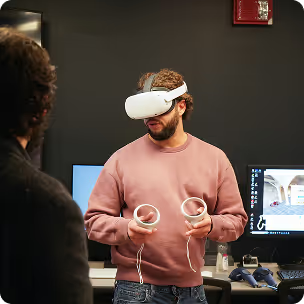

The following testimonials come from leading scholars, authors, and practitioners whose work I deeply admire. Their generous reflections speak to the impact of my scholarship and creative work, and highlight the collaborative spirit that continues to shape my journey.
Founder of the Ida B. Wells JUST Data Lab, Author and Scholar on Race, Technology, and Justice
"Against the backdrop of tech-mediated violence and oppression_ where digital tools are increasingly used to surveil, track, and control populations_ Phoenix of Gaza stands out as a powerful model of liberatory technology. It reveals what is possible when we listen to and learn from those often buried beneath the rubble of so-called ‘progress’ and ‘innovation’. Gaza XR, a virtual reality experience, plants the seeds for transforming our social and political realities toward greater justice and joy. Above all, this Palestinian-led initiative shows us what is possible when our work as world-builders is guided by the deep interdependence of people and planet."
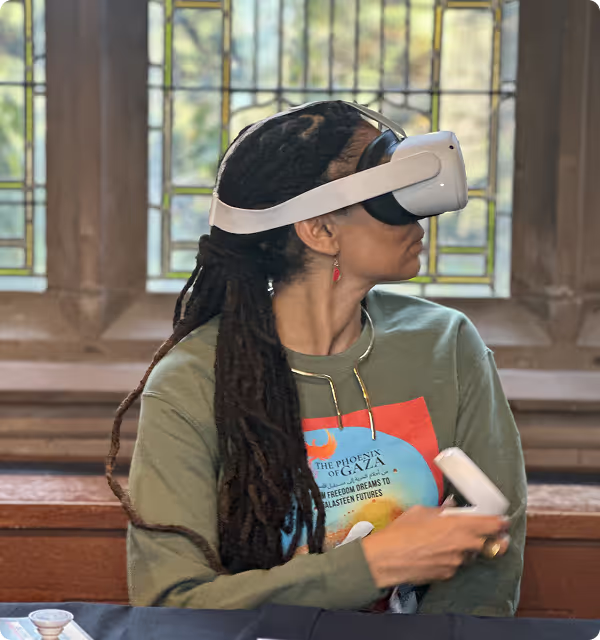
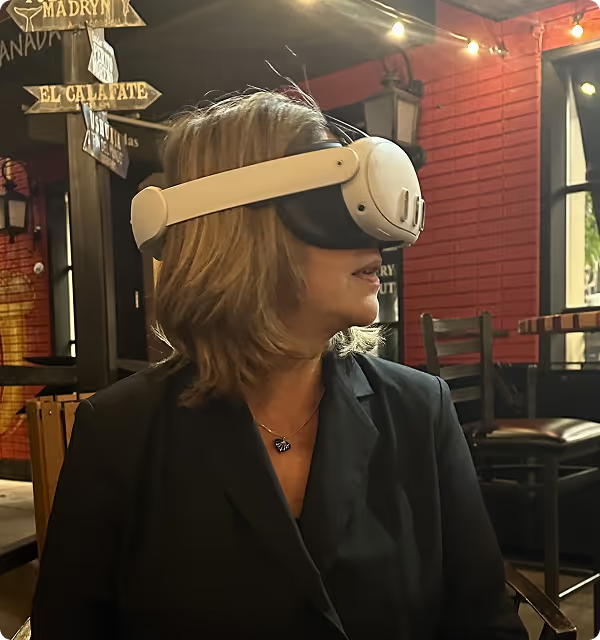
Award-Winning, New York Times Bestselling Author of Nine Critically Acclaimed Books Published in Over 30 Languages
“The Phoenix of Gaza XR Project opens up a portal in time and space, allowing participants to virtually ‘visit’ land, architecture and people that have been sealed off by Israel's brutal siege for decades, and that that have, since the time of filming, been decimated by genocidal violence. When I put on the VR goggles, I was instantly transported to the sights and sounds or a people living daily lives filled with beauty against all odds, lives that should have been protected. This is a testimony, an archive and a love letter, and it is among the most innovative and powerful uses of technology that I have ever experienced”
Pulitzer Prize-Winning Journalist and War Correspondent
“I’ve spent a lot of time in Gaza, and this project has that 3D quality; you could even look away from the main image and still feel like you were there. It brought so much back. My office was in the center of Gaza City, and I saw that whole area that was eventually destroyed. Even in still photographs, that’s very hard for me to look at. The most difficult part was the last video on the beach. Having been in Gaza when it was bombed, it’s the sounds more than the images that bring back the fear and trauma. I thought it was very effective in lifting the voices of children, half the population of Gaza is under 18. I’ve covered war for 20 years, and what’s most painful is what it does to children. Hearing them speak about losing their mothers; that’s always the hardest thing to witness. This experience gives people a real sense of what Gaza looked and felt like. It shows the horrific injustice and violence of the Israeli state, and hopefully stirs people from the passivity of watching a livestream genocide and doing nothing.”
“After five years away from home and unable to return, Naim Aburaddi teamed up with his former Professor, Ahlam Muhtaseb, and used a fellowship to build a portal to Gaza. With the help of friends, he sent cameras into his beloved home and collected footage of streets, weddings, children at parks, families on the Meditterranean shore, the Great Omari Mosque, the St Porphyrius Church, the Turkish hamam, and city centers filmed between July 2022-July 2023 to share it with the rest of the world just months before all these sites, all the babies, all sources and signs of life would be targeted for destruction.
On December 5, 2024, thanks to Prof Ruha Benjamin and the Center for Digital Humanities at Princeton, we were all able to visit Gaza and marvel in its beauty and be shocked_ as if for the first time_ by its attempted destruction. The portal was a 360-degree, 3D experience that overcomes the most formidable barriers of siege & isolation. Honored to have been part of the program to launch it and to share space with many new and old friends. The Gaza VR is now making its way across the United States- be sure to catch it and catch a glimpse here: gazaxr.com."
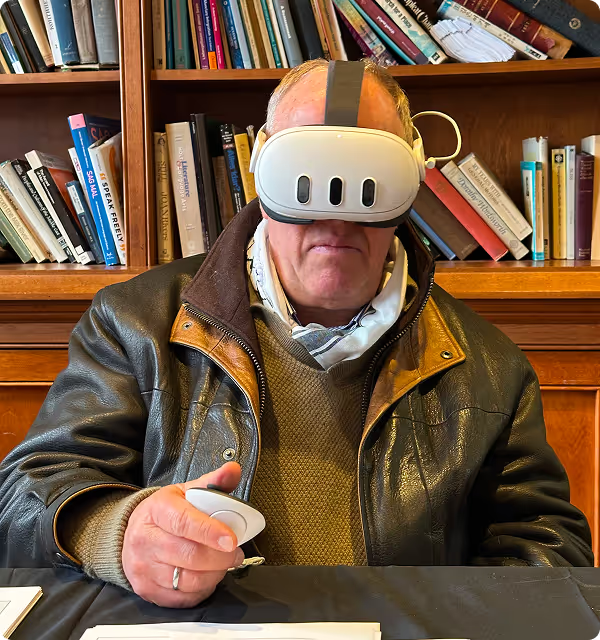

Professor Emeritus of Communication, University of Massachusetts Amherst
“The genocide in Gaza has been made possible by the inaction of the rest of the world, content to watch and allow the daily slaughter. In part, this is a result of the relentless propaganda over the last century, that portrays the Arab world as a place of barbarism, and Arab people as something less than human, underserving of empathy. The deaths of tens of thousands of Palestinian civilians (the majority of them children) appears as an afterthought in the perception of the global North because it is happening to people unworthy of our caring. The Phoenix of Gaza uses virtual reality technology to rescue Palestinians from this nightmare, the immersive technology forcing the viewer to experience Palestine in a visceral manner. By transporting the viewer to the mundane reality of everyday life in a pre-genocide Gaza, it shows that Palestinians are like the rest of humanity, attending to daily domestic tasks and participating in the social life of the community. It is a stunning attempt at empathy, forcing us to see Palestinians as human – a necessary pre-requisite for solidarity in a time of genocide.”
Human Rights Attorney and Associate Professor, Rutgers University
“After five years away from home and unable to return, Naim Aburaddi teamed up with his former Professor, Ahlam Muhtaseb, and used a fellowship to build a portal to Gaza. With the help of friends, he sent cameras into his beloved home and collected footage of streets, weddings, children at parks, families on the Meditterranean shore, the Great Omari Mosque, the St Porphyrius Church, the Turkish hamam, and city centers filmed between July 2022-July 2023 to share it with the rest of the world just months before all these sites, all the babies, all sources and signs of life would be targeted for destruction.
On December 5, 2024, thanks to Prof Ruha Benjamin and the Center for Digital Humanities at Princeton, we were all able to visit Gaza and marvel in its beauty and be shocked - as if for the first time - by its attempted destruction. The portal was a 360-degree, 3D experience that overcomes the most formidable barriers of siege & isolation.
Honored to have been part of the program to launch it and to share space with many new and old friends. The Gaza VR is now making its way across the United States- be sure to catch it and catch a glimpse here: gazaxr.com."

Recognition of academic excellence, leadership, and commitment to social justice. These honors reflect my dedication to advancing scholarship, fostering community impact, and amplifying underrepresented voices through research, teaching, and advocacy.
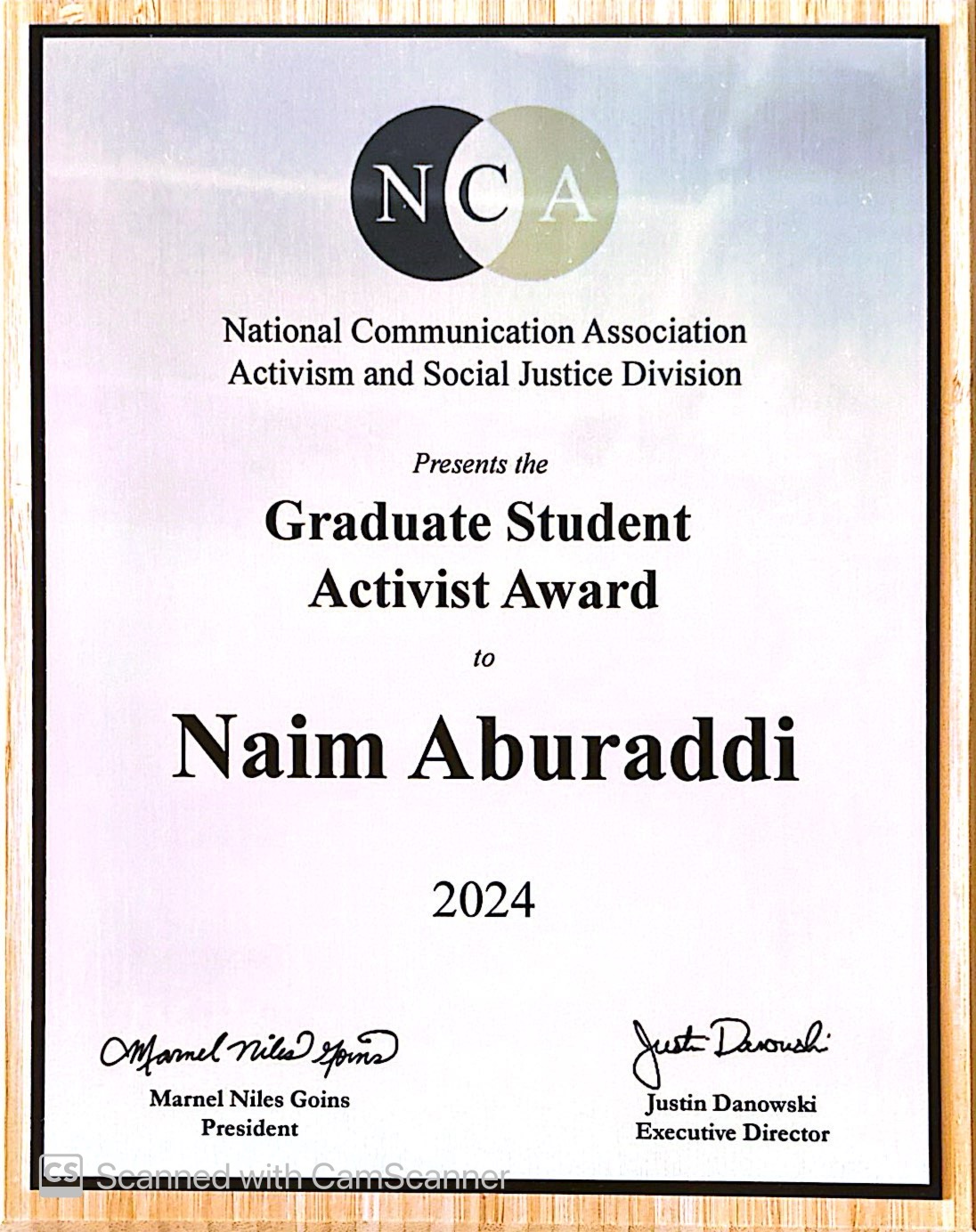
Recipient of the 2024 prestigious Graduate Student Activist Award from the Activism & Social Justice Division of the National Communication Association (NCA)
_1.jpg)
Outstanding Graduate Student Award Issued by Department of Communication Studies at California State University, San Bernardino

Outstanding Paper Issued by National Model United Nations, New York

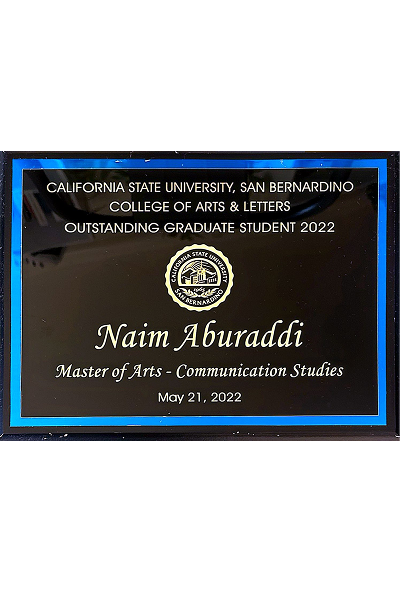


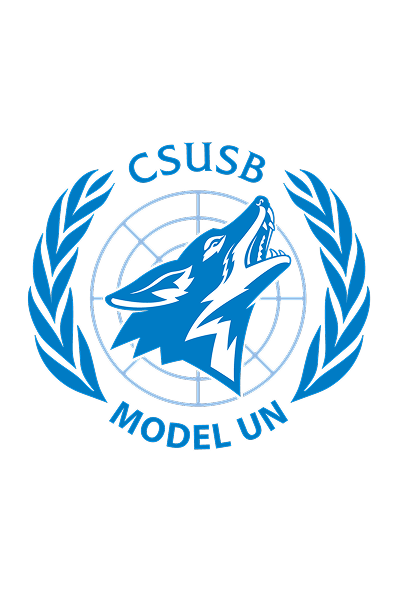
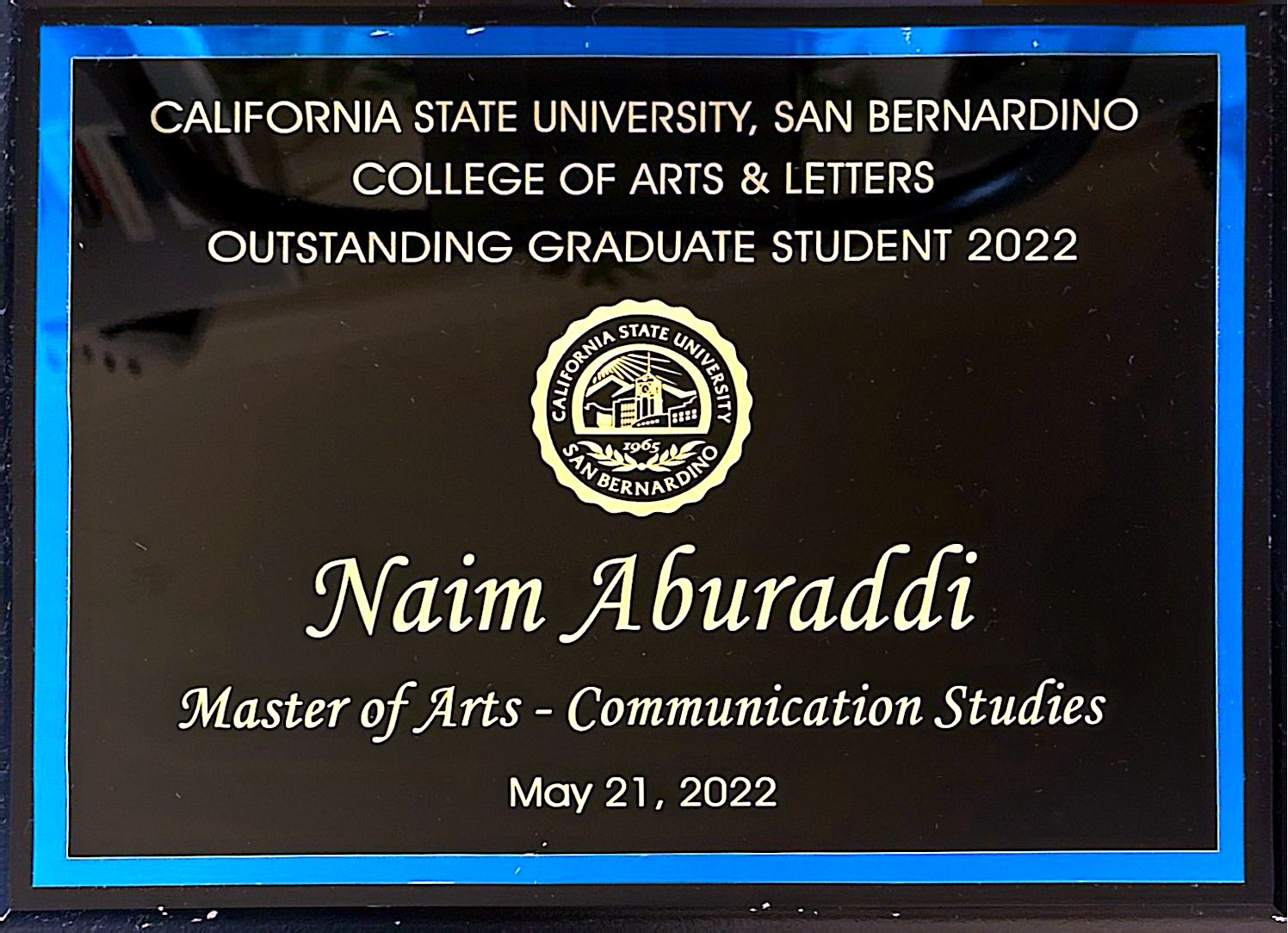
Outstanding Graduate Student Award Issued by CSUSB College of Arts and Letters

Outstanding Graduate Teaching Associate (GTA) Issued by Department of Communication Studies at California State University, San Bernardino

Recipient of the 2024 prestigious Graduate Student Activist Award from the Activism & Social Justice Division of the National Communication Association (NCA)

Outstanding Graduate Student Award Issued by CSUSB College of Arts and Letters
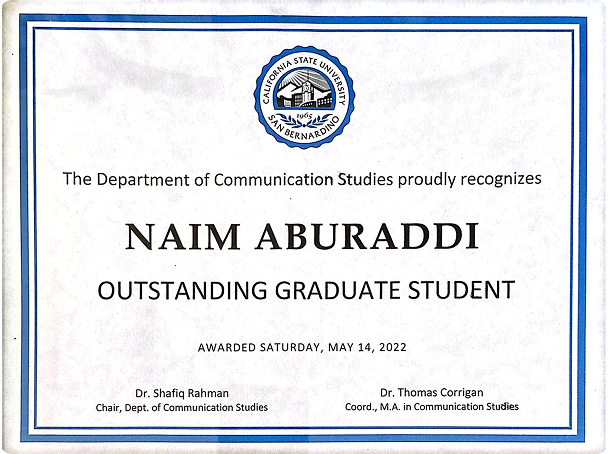
Outstanding Graduate Student Award Issued by Department of Communication Studies at California State University, San Bernardino

Outstanding Graduate Teaching Associate (GTA) Issued by Department of Communication Studies at California State University, San Bernardino

Outstanding Paper Issued by National Model United Nations, New York